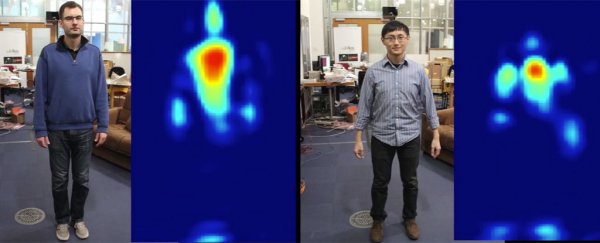It's fair to say that Wi-Fi has become a pretty indispensable part of modern-day life, but it seems the technology can do a heck of a lot more than just stream data to and from our digital devices.
Researchers in the US have developed a system called RF Capture that uses wireless signals to detect and track human motion throughout a building, even when people are behind walls or furniture, or are in rooms at the opposite end of the building.
In a paper that will be presented at the SIGGRAPH Asia 2015 conference next month, researchers from the Massachusetts Institute of Technology (MIT) describe how RF Capture can identify particular persons in another room, and trace their body motion to detect how they're moving – including walking, tracing hand gestures in the air, and even registering the rise and fall of a breathing person's chest.
"The possibilities are vast," said Fadel Adib, lead author of the paper. "We're just at the beginning of thinking about the different ways to use these technologies."
The device works like a specialised kind of Wi-Fi router, transmitting wireless signals and analysing signal reflections as they are directed back to the transmitter. However, up until now, wireless signals bouncing off different people (and different body parts) effectively all looked the same, which poses a problem if you're trying to make sense of them.
"The data you get back from these reflections are very minimal," said Dina Katabi, a professor in MIT's Computer Science and Artificial Intelligence Lab (CSAIL). "However, we can extract meaningful signals through a series of algorithms we developed that minimise the random noise produced by the reflections."
The algorithms track variations in movements in 3D space, and once trained on a particular person, can stitch together a virtual silhouette for each individual in a room, recognising them by height and body shape.
According to the researchers, the applications for this kind of body tracking could have an impact on everything from the motion capture used in Hollywood movies to smart home capabilities for consumers, helping people run their houses with greater efficiency and safety.
"We're working to turn this technology into an in-home device that can call 911 if it detects that a family member has fallen unconscious," said Katabi. "You could also imagine it being used to operate your lights and TVs, or to adjust your heating by monitoring where you are in the house."

